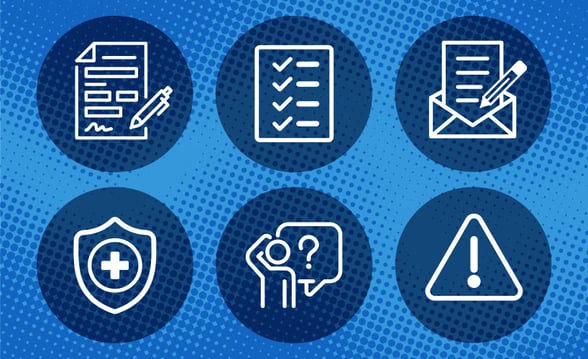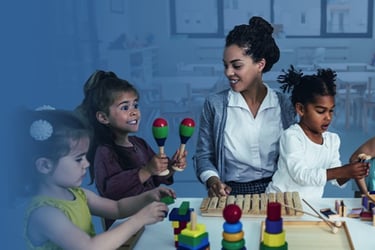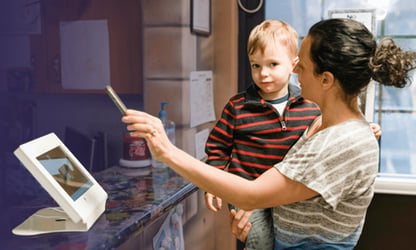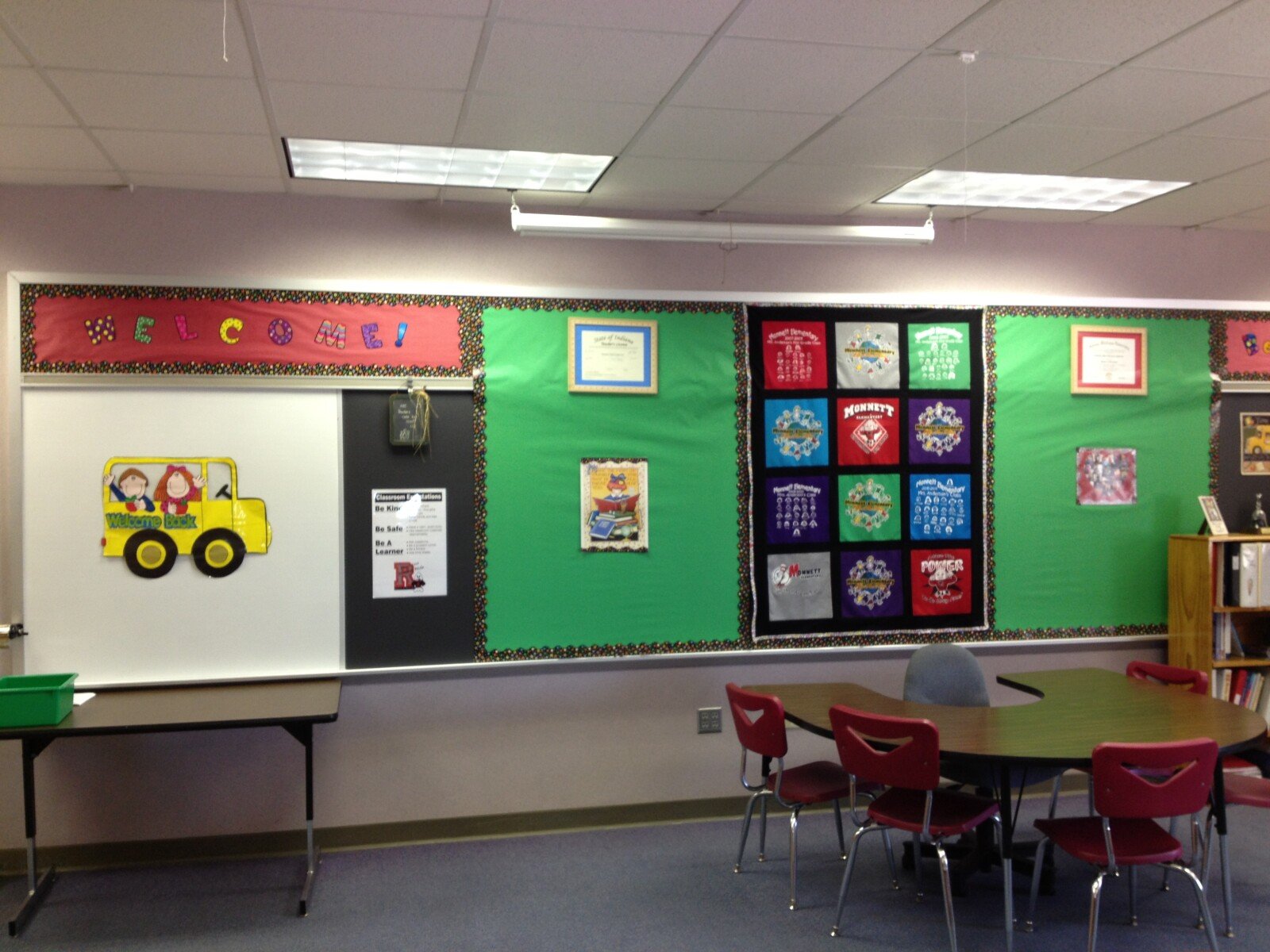
Thematic learning is a powerful approach in preschool education that helps young children make meaningful connections and develop a deeper understanding of the world around them. By organizing learning experiences around a central theme, educators can create an engaging and cohesive curriculum that captivates children's interests and fosters their growth across multiple domains. This article provides a month-by-month guide to inspire educators as they plan their preschool themes throughout the school year.
Table of Contents
- What Is a Preschoolers Theme?
- Why Do Themes Work So Well for Preschoolers?
- How Long Should Preschool Themes Last?
- How to Plan and Implement Preschool Themes
- Best Preschool Themes by Month
- How to Evaluate the Success of a Preschool Theme
What Is a Preschoolers Theme?

A preschool theme is an overarching idea or subject that guides the planning and execution of various educational activities within a preschool setting. It acts as a central thread that ties together different learning experiences, fostering an integrated approach to early childhood education. By centering activities around a common theme for preschoolers, educators can provide a more immersive and coherent learning environment that stimulates curiosity and encourages exploration.
| Examples of Preschool Themes | Not Preschool Themes |
|---|---|
| Seasons | Individual Letters |
| Animals | Numbers |
| Community Helpers | Shapes |
| Transportation | Colors |
While fundamental elements like letters, numbers, shapes and colors are crucial building blocks of preschool learning, they are not themes in themselves. Instead, they are woven into broader themes to enrich the educational experience. For instance, a theme like "Under the Sea" might incorporate counting with seashells or learning shapes by identifying different types of fish, thus embedding these core concepts within a larger, more engaging context.
Why Do Themes Work So Well for Preschoolers?
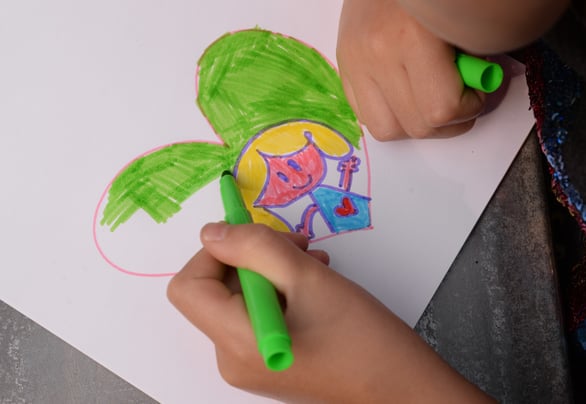
Thematic learning is highly effective for preschoolers because it taps into their natural curiosity and helps them make sense of the world in a way that is meaningful and relevant to their lives. Studies have shown that instruction based on themes for preschool leads to:
- Increased engagement and motivation (Davidesco et al., 2019).
- Improved retention and transfer of knowledge (Hannafin & McDonald, 2020).
- Enhanced language development and vocabulary acquisition (Neuman & Dwyer, 2009).
By immersing children in a theme, preschool teachers can create a rich learning environment that encourages exploration, problem-solving and skill development across multiple domains.
How Long Should Preschool Themes Last?
The ideal length for a preschool theme unit varies depending on factors such as children's interests, developmental levels and the depth of the topic. However, most experts recommend that themes last between one to four weeks (Kostelnik et al., 2019). This duration allows sufficient time for each student to engage with the theme, explore related concepts and learning activities and develop a deeper understanding while maintaining their interest and enthusiasm.
How to Plan and Implement Preschool Themes
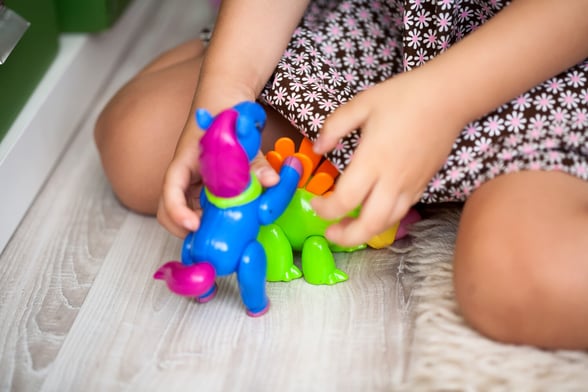
Identify Goals and Objectives
Before selecting a theme, it's crucial to identify clear educational goals and objectives that align with children's developmental needs and learning standards. This ensures that the chosen themes are purposeful and contribute to children's overall growth and development.
Organize a Year-Round Theme Calendar
Annual Planning
Creating a year-round theme calendar offers several benefits:
- Ensures a balanced and comprehensive curriculum
- Allows for long-term planning and resource allocation
- Helps maintain a consistent learning environment
Seasonal Alignment
Aligning themes with seasons and important dates throughout the year:
- Makes learning relevant and engaging for children
- Provides opportunities to celebrate cultural events and holidays related to the time of year
- Encourages children to observe and appreciate changes in their environment
Variety and Balance
Incorporating a diverse range of themes:
- Caters to different interests and learning styles
- Exposes children to a wide array of topics and concepts
- Promotes well-rounded development across all domains
Flexibility and Adaptation
While a theme calendar provides structure, it's essential to remain flexible and open to change:
- Accommodate spontaneous learning opportunities that arise from children's interests
- Adapt themes to address specific needs or challenges within the class
- Allow for adjustments to lesson plans based on feedback and observations
Create Engaging Activities Based on the Chosen Theme
Activity Selection
When selecting activities for a theme, consider the following:
- Age-appropriateness and developmental suitability
- Alignment with theme objectives and learning goals
- Opportunities for active engagement and participation
Incorporating Multiple Learning Domains
Design activities that integrate various learning domains:
- Cognitive: Problem-solving, critical thinking and memory skills
- Social-emotional: Cooperation, empathy and self-regulation
- Physical: Gross and fine motor development, coordination
- Language: Communication, vocabulary and literacy skills
Interactive and Hands-on Learning
Prioritize interactive and hands-on activities that:
- Encourage exploration and discovery
- Promote creativity and self-expression
- Foster a love for learning through play
Adapting to Individual Needs
Strategies for adapting activities to meet the diverse needs of all children:
- Provide multiple levels of complexity and challenge
- Offer various modes of participation and expression
- Use visual aids, manipulatives and assistive technology as needed
Best Preschool Themes by Month
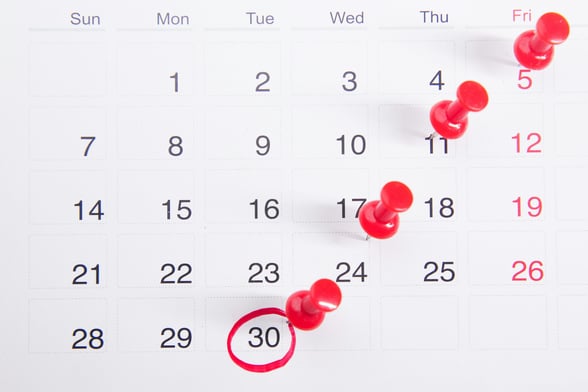
Here is a list of monthly preschool themes that are fun and engaging and activities you can use to engage preschoolers in learning.
January Preschool Themes
Themes: Snow, Ice, Winter Animals, Arctic Habitat
Activities:
Snowflake Symmetry Painting
Overview: Children create beautiful symmetrical snowflakes using paint and paper folding techniques, exploring concepts of symmetry and patterns.
Materials:
- White paper
- Blue paint
- Paintbrushes
- Scissors
Setup:
-
Cut white paper into square shapes.
-
Pour blue paint onto plates or palettes.
- Distribute paper squares, paint and paintbrushes to each child.
Activity Instructions:
-
Fold the paper square in half diagonally to create a triangle.
-
Fold the triangle in half again to create a smaller triangle.
-
Unfold the paper and have children paint designs on one side of the crease using blue paint.
-
Refold the paper and gently press to transfer the paint to the other side, creating a symmetrical design.
-
Unfold the paper to reveal the beautiful symmetrical snowflake.
-
Allow the paint to dry before displaying the snowflakes in the classroom.
Ice Cube Excavation
Overview: Children use tools to excavate small toys frozen in ice cubes, developing fine motor skills and learning about the properties of ice.
Materials:
- Small toys or objects
- Ice cube tray
- Water
- Freezer
- Salt
- Pipettes or droppers
- Small hammers or mallets
Setup:
-
Place small toys or objects into each compartment of an ice cube tray.
-
Fill the tray with water and freeze overnight.
-
Remove the ice cubes from the tray and place them in a sensory bin or on a tray.
-
Provide salt, pipettes or droppers and small hammers or mallets for each child.
Activity Instructions:
-
Encourage children to explore the frozen ice cubes and observe the toys inside.
-
Demonstrate how to use the tools to excavate the toys from the ice:
- Use pipettes or droppers to drip warm water onto the ice, slowly melting it.
- Sprinkle salt onto the ice to help melt it faster.
- Use small hammers or mallets to gently tap and break the ice.
-
Allow children to work on excavating their toys, providing assistance as needed.
-
Discuss the properties of ice and how it melts when exposed to heat or salt.
Blubber Experiment
Overview: Children learn about animal adaptations by exploring how blubber helps keep Arctic animals warm in icy waters.
Materials:
- Large bowl
- Ice water
- Vegetable shortening
- Plastic gloves
Setup:
-
Fill a large bowl with ice water.
- Set out vegetable shortening and plastic gloves.
Activity Instructions:
-
Discuss how Arctic animals, such as whales and seals, stay warm in icy waters.
-
Explain that these animals have a thick layer of fat called blubber that helps insulate their bodies.
-
Have children put on plastic gloves and submerge their hands in the ice water, noting how cold it feels.
-
Remove the glove and spread a thick layer of vegetable shortening on their hands.
-
Put the gloves back on over the shortening and submerge their hands in the ice water again.
-
Ask children to compare how their hands feel with and without the "blubber" layer.
-
Discuss how the blubber layer helps keep Arctic animals warm in cold environments.
Arctic Animal Yoga
Overview: Children learn about Arctic animals while practicing yoga poses that mimic their movements and characteristics.
Materials:
- Yoga mats or soft flooring
- Pictures of Arctic animals (e.g., polar bear, Arctic fox, snowy owl, walrus)
Setup:
-
Clear an open space in the classroom for children to practice yoga poses.
-
Display pictures of Arctic animals for reference.
Activity Instructions:
-
Introduce the concept of yoga and how it can help us connect with nature and animals.
-
Show pictures of Arctic animals and discuss their unique characteristics and movements.
-
Demonstrate yoga poses that mimic each animal, such as:
- Polar Bear Pose (Child's Pose): Kneel on the floor, sit back on heels and stretch arms forward.
- Arctic Fox Pose (Downward Dog): Start on hands and knees, then lift hips up and back to form an inverted V shape.
- Snowy Owl Pose (Tree Pose): Stand on one leg, place the other foot on the inner thigh and stretch arms up like wings.
- Walrus Pose (Cobra Pose): Lie on stomach, place hands under shoulders and lift chest off the ground.
-
Have children practice each pose, holding for a few breaths and focusing on the animal they are imitating.
-
Encourage children to move through the poses in a sequence, creating their own Arctic animal yoga flow.
Winter Animal Track Stamping
Overview: Children create winter animal track patterns using various stamping materials, learning about animal footprints and developing fine motor skills.
Materials:
- White paper
- Blue or gray paint
- Sponges cut into animal track shapes (e.g., polar bear, Arctic fox, snowshoe hare)
- Plastic forks
- Cotton swabs
- Pencils with erasers
Setup:
- Cut sponges into various animal track shapes.
- Pour blue or gray paint onto plates or palettes.
- Distribute paper, paint and stamping materials to each child.
Activity Instructions:
- Discuss the different types of animal tracks that can be found in the snow during winter.
- Show examples of animal track patterns and how they differ from one another.
- Demonstrate how to use the various stamping materials to create animal tracks:
- Press the sponge shapes into the paint and then onto the paper to create clear prints.
- Dip the tines of a plastic fork into the paint and press onto the paper to create bird or small mammal tracks.
- Use cotton swabs dipped in paint to create tiny dots for mouse or vole tracks.
- Press the eraser end of a pencil into the paint to create circular prints for rabbit or hare tracks.
- Encourage children to experiment with the different stamping materials and create their own winter animal track patterns.
- Display the finished artwork in the classroom and discuss the various animal tracks represented.
February: Love and Friendship
Themes: Valentine's Day, Friendship, Kindness, Dental Health
Activities:
Friendship Fruit Salad
Overview: Children work together to create a delicious fruit salad while learning about cooperation and healthy eating habits.
Materials:
- Various fruits (e.g., strawberries, grapes, bananas, apples)
- Plastic knives (child-safe)
- Large mixing bowl
- Serving spoons
- Paper plates
- Whipped cream (optional)
Setup:
- Wash and prepare the fruits, cutting them into larger pieces if necessary.
- Place the fruits in separate bowls or containers.
- Set out plastic knives, a large mixing bowl, serving spoons and paper plates.
Activity Instructions:
- Discuss the importance of friendship and working together.
- Explain that the class will be making a friendship fruit salad, with each child contributing to the dish.
- Assign each child a specific fruit to cut and add to the mixing bowl.
- Demonstrate how to safely use the plastic knives to cut the fruits into smaller pieces.
- Have children take turns adding their cut fruits to the large mixing bowl.
- Once all the fruits are added, gently mix the salad together using serving spoons.
- Serve the friendship fruit salad on paper plates, topping with whipped cream if desired.
- Enjoy the salad together as a class, discussing how each person's contribution made the dish special.
Kindness Poster Collage
Overview: Children create a collage poster featuring kind words and actions, promoting a positive classroom environment.
Materials:
- Large poster board
- Magazines
- Scissors
- Glue sticks
- Markers
Setup:
- Gather a variety of magazines with pictures and text.
- Set out scissors, glue sticks and markers for each child.
- Display the large poster board in a central location.
Activity Instructions:
- Discuss the concept of kindness and why it's important in the classroom and beyond.
- Brainstorm examples of kind words and actions with the children.
- Encourage children to look through the magazines and find pictures or words that represent kindness.
- Have children cut out their chosen pictures and words.
- Assist children in gluing their cut-outs onto the large poster board, creating a collage.
- Once the collage is complete, have children use markers to add their own kind words or drawings.
- Display the kindness poster in the classroom as a reminder to practice kindness every day.
Dental Health Sorting Game
Overview: Children sort pictures of food into "tooth-friendly" and "tooth-harmful" categories, learning about proper dental hygiene.
Materials:
- Pictures of various foods (e.g., fruits, vegetables, candy, soda)
- Two large paper plates
- Marker
- Glue or tape
Setup:
- Print pictures of various foods, both healthy and unhealthy for teeth.
- Label one paper plate "Tooth-Friendly" and the other "Tooth-Harmful."
- Glue or tape the food pictures to small index cards or cardstock for durability.
Activity Instructions:
- Discuss the importance of dental health and how different foods can impact our teeth.
- Show children the two labeled paper plates and explain the sorting categories.
- Hold up each food picture and have children decide whether it belongs in the "Tooth-Friendly" or "Tooth-Harmful" category.
- Encourage children to explain their reasoning for each choice.
- Have children take turns placing the food pictures on the appropriate paper plate.
- Once all the pictures are sorted, review the categories and discuss ways to maintain good dental health.
March: Spring and Growth
Themes: Spring Weather, Plants, Seeds, St. Patrick's Day
Activities:
Planting Grass Heads
Overview: Children plant grass seeds in decorated cups, learning about plant growth and responsibility.
Materials:
- Grass seeds
- Soil
- Paper cups
- Markers or paint
- Googly eyes
- Glue
- Plastic spoons
- Water
Setup:
- Gather supplies and set them out for each child.
- Fill paper cups halfway with soil.
Activity Instructions:
- Have children decorate their paper cups with markers or paint to create funny faces.
- Glue googly eyes onto the cups to complete the face.
- Demonstrate how to sprinkle a small number of grass seeds onto the soil.
- Have children cover the seeds with a thin layer of additional soil.
- Help children water their grass heads using plastic spoons, being careful not to overwater.
- Place the grass heads in a sunny spot and encourage children to water them regularly.
- Over the next few weeks, observe the grass growing and discuss the changes taking place.
- Once the grass has grown, children can trim their grass heads' "hair" with child-safe scissors.
Rainbow Scavenger Hunt
Overview: Children search for objects in various colors of the rainbow, a fun learning activity where they explore their environment and learn about colors.
Materials:
- Rainbow color cards (red orange, yellow, green, blue, purple)
- Baskets or bags for collecting items
Setup:
- Create rainbow color cards by cutting out small squares of paper in each color.
- Provide a basket or bag for each child.
Activity Instructions:
- Discuss the colors of the rainbow and their order (red orange, yellow, green, blue, purple).
- Show children the rainbow color cards and explain that they will be going on a scavenger hunt to find objects in each color.
- Take children on a walk around the classroom, school or outdoor area.
- Encourage children to find objects that match each color card and place them in their basket or bag.
- Help children identify colors and objects as needed.
- Once the scavenger hunt is complete, have children sort their objects by color.
- Discuss the various objects found and create a rainbow display with the collected items.
Shamrock Stamping
Overview: Children create shamrock patterns using various stamping materials, developing fine motor skills and learning about St. Patrick's Day.
Materials:
- Green paint
- Paper plates
- White paper
- Sponges cut into shamrock shapes
- Plastic forks
- Pencils with erasers
- Baby wipes for cleanup
Setup:
- Pour green paint onto paper plates.
- Cut sponges into shamrock shapes.
- Distribute white paper, paint and stamping materials to each child.
Activity Instructions:
- Discuss the significance of shamrocks and their association with St. Patrick's Day.
- Demonstrate how to use the various stamping materials to create shamrock patterns:
- Dip the sponge shamrocks into the paint and press onto the paper.
- Use the tines of a plastic fork to create the stem and leaves of the shamrock.
- Press the eraser end of a pencil into the paint to create small shamrock shapes.
- Encourage children to experiment with the different stamping materials and create their own shamrock patterns.
- Display the finished artwork in the classroom and discuss the various stamping techniques used.
April: Earth and Environment
Themes: Earth Day, Recycling, Gardening, Insects
Activities:
Recycling Sorting Station
Overview: Children learn about recycling by sorting various materials into the appropriate bins, promoting environmental awareness.
Materials:
- Three large bins labeled "Paper," "Plastic" and "Metal"
- Various recyclable materials (e.g., paper, plastic bottles, aluminum cans)
- Pictures of recyclable items for each category
Setup:
- Set up three large bins in a central location, labeling them "Paper," "Plastic" and "Metal."
- Collect various recyclable materials and place them in a mixed pile near the bins.
- Attach pictures of recyclable items to each bin for visual reference.
Activity Instructions:
- Discuss the importance of recycling and how it helps protect the environment.
- Explain the three categories of recyclable materials: paper, plastic and metal.
- Show children the sorting station and demonstrate how to sort items into the appropriate bins.
- Have children take turns sorting the recyclable materials, referring to the picture labels as needed.
- Encourage children to discuss why each item belongs in its specific bin.
- Once all materials are sorted, review the contents of each bin and discuss how recycling helps reduce waste.
- Encourage children to practice recycling in the classroom and at home.
Insect Habitat Exploration
Overview: Children explore various insect habitats and learn about the role of insects in the environment.
Materials:
- Magnifying glasses
- Insect identification books or charts
- Nature journals or paper
- Pencils or crayons
- Camera (optional)
Setup:
- Choose an outdoor area with various insect habitats (e.g., garden, trees, grass).
- Provide each child with a magnifying glass and a nature journal or paper.
Activity Instructions:
- Discuss the importance of insects in the environment and how they contribute to plant growth and ecosystem balance.
- Take children on a nature walk to explore different insect habitats.
- Encourage children to use their magnifying glasses to observe insects up close, noting their characteristics and behaviors.
- Help children identify the insects they find using identification books or charts.
- Have children draw or write about the insects they observe in their nature journals.
- Take photos of the insects and their habitats to display in the classroom.
- Discuss the various insect habitats explored and how they support different types of insects.
Seed Bomb Making
Overview:
Children create seed bombs using clay, soil and wildflower seeds to promote plant growth and beautify outdoor spaces.
Materials:
- Air-dry clay
- Potting soil
- Wildflower seeds
- Bowl
- Water
- Wax paper
Setup:
- Gather materials and set them out on a table.
- Cover the work area with wax paper for easy cleanup.
Activity Instructions:
- Discuss the importance of plants in the environment and how they provide food and shelter for animals.
- Explain the concept of seed bombs and how they can help spread plants in a fun and eco-friendly way.
- Have children break off small pieces of air-dry clay and flatten them into discs.
- Sprinkle a small amount of potting soil and wildflower seeds onto each clay disc.
- Help children fold the clay discs around the soil and seeds, shaping them into small balls.
- Place the seed bombs on the wax paper to dry overnight.
- Once dry, have children gently toss the seed bombs into outdoor areas where they would like to see wildflowers grow.
- Discuss the importance of patience and observation as the seeds germinate and grow over time.
May: Community and Transportation
Themes: Community Helpers, Transportation, Maps, Directions
Activities:
Community Helper Dress-Up
Overview: Children explore various community helper roles through dress-up play, learning about their responsibilities and importance.
Materials:
- Dress-up clothes and props for community helpers (e.g., police officer, firefighter, doctor, teacher)
- Full-length mirror
Setup:
- Gather dress-up clothes and props for various community helpers.
- Set up a dress-up area with a full-length mirror.
Activity Instructions:
- Discuss the different community helpers and their roles in keeping the community safe and functioning.
- Introduce the dress-up area and explain how children can use the clothes and props to pretend to be community helpers.
- Encourage children to take turns dressing up as different community helpers.
- Have children act out scenarios related to each community helper's job, such as putting out a fire or teaching a lesson.
- Use the mirror to allow children to see themselves in their community helper roles.
- Discuss the importance of each community helper and how they work together to support the community.
Transportation Sorting Game
Overview: Children sort various vehicles into categories based on their mode of transportation, learning about different ways to travel through a fun theme.
Materials:
- Pictures or toy models of various vehicles (e.g., car, bus, airplane, train, boat)
- Three large hoops or circles made from string
- Labels for each category: "Land," "Air" and "Water"
Setup:
- Place the three large hoops or string circles on the floor, spacing them apart.
- Label each hoop or circle with a transportation category: "Land," "Air" and "Water."
- Gather pictures or toy models of various vehicles.
Activity Instructions:
- Discuss the different modes of transportation and how they help people travel from one place to another.
- Show children the sorting hoops or circles and explain the three categories: land, air and water.
- Hold up each vehicle picture or toy model and have children identify its mode of transportation.
- Encourage children to place each vehicle in the appropriate hoop or circle based on its category.
- Discuss the characteristics of each vehicle and how it is suited for its specific mode of transportation.
- Once all vehicles are sorted, review the categories and discuss the advantages and disadvantages of each mode of transportation.
Map Making
Overview: Children create simple maps of their classroom or school, learning about spatial awareness and directionality.
Materials:
- Large sheets of paper
- Crayons or markers
- Stickers or cut-outs of classroom objects
- Scissors
- Glue
Setup:
- Provide each child with a large sheet of paper and drawing materials.
- Gather stickers or cutouts of various classroom objects.
Activity Instructions:
- Discuss the concept of maps and how they help people navigate spaces and find objects.
- Take children on a walk around the classroom or school, pointing out important landmarks and features.
- Return to the classroom and have children create a simple map of the space, starting with the outline of the room.
- Encourage children to add details to their maps, such as windows, doors and furniture.
- Provide stickers or cut-outs of classroom objects for children to place on their maps.
- Help children label their maps and discuss the relative positions of objects using directional language (e.g., near, far, above, below).
- Display the finished maps in the classroom and use them for navigation and spatial awareness activities.
For more ideas for your school, check out our blog on preschool May newsletters!
June: Summer and Ocean Life
Themes: Beach, Ocean Animals, Summer Safety, Father's Day
Activities:
Ocean Sensory Bin
Overview: Children explore a sensory bin filled with materials representing the ocean, developing sensory awareness and learning about ocean life.
Materials:
- Large plastic bin
- Blue water beads
- Sand
- Seashells
- Plastic ocean animals
- Scoops or cups
- Tweezers or tongs
Setup:
- Fill the plastic bin with blue water beads and a layer of sand.
- Place seashells and plastic ocean animals throughout the bin.
- Provide scoops, cups, tweezers and tongs for children to use.
Activity Instructions:
- Introduce the ocean sensory bin and discuss the various materials inside.
- Encourage children to explore the bin using their hands and the provided tools.
- Have children identify the different ocean animals and seashells they find.
- Discuss the texture of the water beads and sand, comparing them to the feel of ocean water and beach sand.
- Encourage children to use the tools to scoop, pour and grasp the materials, developing fine motor skills.
- Discuss the importance of ocean conservation and how children can help protect marine life.
Summer Safety Sorting Game
Overview: Children sort pictures of summer activities into "safe" and "unsafe" categories, learning about summer safety rules.
Materials:
- Pictures of summer activities (e.g., swimming with a lifeguard, applying sunscreen, running on a pool deck, sitting in a hot car)
- Two large paper plates
- Marker
- Glue or tape
Setup:
- Label one paper plate "Safe" and the other "Unsafe."
- Glue or tape the summer activity pictures to small index cards or cardstock for durability.
Activity Instructions:
- Discuss the importance of staying safe during summer activities.
- Show children the two labeled paper plates and explain the sorting categories.
- Hold up each summer activity picture and have children decide whether it belongs in the "Safe" or "Unsafe" category.
- Encourage children to explain their reasoning for each choice.
- Have children take turns placing the activity pictures on the appropriate paper plate.
- Once all pictures are sorted, review the categories and discuss summer safety rules.
Father's Day Card Making
Overview: Children create personalized Father's Day cards using various art materials, expressing appreciation for their fathers or father figures.
Materials:
- Construction paper
- Scissors
- Glue
- Markers or crayons
- Stickers or decorative elements
- Family photos (optional)
Setup:
- Gather art materials and set them out for each child.
- Provide a variety of construction paper colors and decorative elements.
Activity Instructions:
- Discuss the importance of showing appreciation for fathers and father figures.
- Explain that children will be creating personalized Father's Day cards.
- Demonstrate how to fold the construction paper in half to create a card.
- Encourage children to use the art materials to decorate their cards, expressing their love and appreciation.
- Help children write a simple message inside the card, such as "Happy Father's Day" or "I love you, Dad."
- Assist children in signing their names on the cards.
- If desired, have children glue a family photo or draw a picture of themselves with their father or father figure.
- Encourage children to present their cards to their fathers or father figures on Father's Day.
July: Patriotism and Independence
Themes: Fourth of July, American Symbols, Patriotic Colors, Summer Festivals
Activities:
Patriotic Color Mixing
Overview: Children explore color mixing by combining red, white and blue paint to create patriotic artwork.
Materials:
- White paper
- Red, white and blue paint
- Paintbrushes
- Paper plates
- Smocks or old shirts for paint protection
Setup:
- Pour small amounts of red, white and blue paint onto paper plates.
- Provide each child with a sheet of white paper and a paintbrush.
- Have children wear smocks or old shirts to protect their clothing.
Activity Instructions:
- Discuss the significance of the colors red, white and blue in relation to the American flag and Fourth of July.
- Demonstrate how to mix two colors together to create a new color (e.g., red + white = pink, blue + red = purple).
- Encourage children to experiment with color mixing on their paper, creating many different shades and hues.
- Have children use the mixed colors to create patriotic artwork, such as fireworks, flags or stars.
- Discuss the process of color mixing and the new colors created.
- Display the finished artwork in the classroom or send it home for families to enjoy.
American Symbol Matching Game
Overview: Children play a matching game with cards featuring American symbols, learning about their significance and history.
Materials:
- American symbol matching cards (e.g., American flag, bald eagle, Statue of Liberty, Liberty Bell)
- Laminating pouches and laminator (optional)
Setup:
- Create matching cards by printing out two copies of each American symbol image.
- Laminate the cards for durability, if desired.
- Shuffle the cards and arrange them face-down in a grid on a table or floor.
Activity Instructions:
- Discuss the various American symbols and their significance in American history and culture.
- Explain the rules of the matching game:
- Children take turns flipping over two cards at a time, trying to find a matching pair.
- If a match is found, the child keeps the pair and takes another turn.
- If the cards do not match, the child flips them back over and the turn passes to the next player.
- Have children take turns playing the matching game, encouraging them to identify the symbols as they are revealed.
- Once all pairs have been found, discuss the symbols and their importance in representing American values and ideals.
Summer Festival Pretend Play
Overview: Children engage in pretend play centered around a summer festival, developing social skills and imagination.
Materials:
- Festival props (e.g., tickets, pretend food, games, prizes)
- Decorations (e.g., streamers, balloons, signs)
- Dress-up clothes (optional)
Setup:
- Create a festival area in the classroom using decorations and props.
- Set up various festival stations, such as a ticket booth, food stand and game area.
Activity Instructions:
- Discuss the concept of summer festivals and the activities and experiences they typically include.
- Introduce the festival pretend play area and explain the different stations.
- Assign roles to children, such as ticket taker, food vendor or game operator.
- Encourage children to engage in pretend play, using the props and dress-up clothes to enhance their experience.
- Have children take turns participating in different festival activities, such as buying tickets, playing games and enjoying pretend food.
- Facilitate social interactions and problem-solving as children navigate the festival play scenario.
- Discuss the importance of community events and how they bring people together to celebrate and have fun.
August: Back to School and Friendship
Themes: New Classroom, Making Friends, School Rules, Feelings, Back to School
Activities:
Classroom Scavenger Hunt
Overview: Children explore their new classroom environment through a scavenger hunt, familiarizing themselves with the space and resources.
Materials:
- Scavenger hunt checklist with pictures of classroom items
- Pencils or crayons
- Stickers for completion
Setup:
- Create a scavenger hunt checklist with pictures of various classroom items (e.g., book corner, art supplies, calendar, cubbies).
- Make copies of the checklist for each child.
Activity Instructions:
- Discuss the importance of familiarizing oneself with a new classroom environment.
- Explain the rules of the scavenger hunt:
- Children explore the classroom to find the items pictured on their checklist.
- When an item is found, children mark it off on their checklist using a pencil or crayon.
- Distribute the scavenger hunt checklists and writing materials to each child.
- Allow children to explore the classroom and mark off the items they find.
- Provide assistance and hints as needed, encouraging children to work together and help each other.
- Once all items have been found, gather the children and review the checklist, discussing the purpose and location of each item.
- Award stickers to children for completing the scavenger hunt.
Friendship Recipe
Overview: Children create a "friendship recipe" by brainstorming and discussing the ingredients necessary for a good friendship.
Materials:
- Large poster paper
- Markers
- Construction paper
- Scissors
- Glue
Setup:
- Write "Friendship Recipe" at the top of the large poster paper.
- Cut construction paper into smaller shapes resembling recipe cards.
Activity Instructions:
- Discuss the concept of friendship and what makes a good friend.
- Explain that the class will be creating a "friendship recipe" to identify the essential ingredients for a strong friendship.
- Brainstorm ideas for friendship ingredients, such as kindness, sharing, honesty and respect.
- Write each ingredient on the large poster paper, leaving space for children to contribute their ideas.
- Distribute the construction paper recipe cards and have children draw or write their own friendship ingredients.
- Have children share their ideas and glue their recipe cards onto the poster paper.
- Review the completed friendship recipe and discuss how children can practice these qualities in their interactions with classmates.
- Display the friendship recipe in the classroom as a reminder of the importance of being a good friend.
Feelings Charades
Overview: Children play a game of charades to identify and express various emotions, developing emotional intelligence and empathy.
Materials:
- Feelings cards with pictures or words representing different emotions (e.g., happy, sad, angry, surprised)
- Bag or container for holding the cards
Setup:
- Create feelings cards by printing out pictures or writing words representing different emotions.
- Place the feelings cards in a bag or container.
Activity Instructions:
- Discuss the importance of recognizing and understanding one's own emotions and the emotions of others.
- Explain the rules of the feelings charades game:
- Children take turns drawing a feelings card from the bag or container.
- Without showing the card to others, the child acts out the emotion using facial expressions and body language.
- The other children try to guess the emotion being portrayed.
- Have children take turns drawing feelings cards and acting out the emotions.
- Encourage children to observe and guess the emotions being portrayed, providing guidance as needed.
- After each turn, discuss the facial expressions and body language associated with the portrayed emotion.
- Extend the activity by having children share situations that might elicit the portrayed emotions and discuss appropriate ways to respond.
September: Apples and Autumn
Themes: Apple Orchard, Fall Leaves, Harvest, Johnny Appleseed
Activities:
Apple Tasting
Overview: Children taste different varieties of apples and describe their characteristics, exploring their senses and expanding their vocabulary through an apple theme.
Materials:
- Various types of apples (e.g., Red Delicious, Granny Smith, Gala)
- Cutting board and knife (for adult use)
- Paper plates
- Tasting chart with columns for each apple variety
- Stickers or markers for recording preferences
Setup:
- Wash and slice the apples, keeping each variety separate.
- Arrange apple slices on paper plates.
- Create a tasting chart with columns for each apple variety.
Activity Instructions:
- Discuss the concept of taste and how different foods can have unique flavors and textures.
- Introduce the different apple varieties and explain that children will be tasting each one.
- Demonstrate how to use senses to observe and describe the apples, such as color, smell, texture and taste.
- Have children taste each apple variety, describing their observations and preferences.
- Record children's preferences on the tasting chart using stickers or markers.
- Compare the results and discuss the differences between the apple varieties.
- Extend the activity by graphing the class's favorite apple variety or using the apples in a cooking project.
Fall Leaf Rubbing
Overview: Children create autumn-themed artwork using leaves and crayons, exploring the textures and shapes of fall foliage.
Materials:
- Fallen leaves in various shapes and sizes
- White paper
- Crayons with paper removed
- Tape
Setup:
- Collect fallen leaves from outside and bring them into the classroom.
- Set out white paper, crayons and tape for each child.
Activity Instructions:
- Discuss the changing colors and falling leaves associated with autumn.
- Introduce the concept of leaf rubbing and demonstrate the process:
- Place a leaf with its veiny side up on the table.
- Cover the leaf with a sheet of white paper.
- Hold the paper in place with one hand and use the other hand to rub the side of a crayon over the leaf.
- Watch as the leaf's shape and texture appear on the paper.
- Have children select leaves and tape them to their paper with the veiny side up.
- Encourage children to experiment with different leaves and crayon colors to create unique artwork.
- Display the finished leaf rubbings in the classroom and discuss the different shapes and textures observed.
- Extend the activity by using the leaf rubbings to create a class book about autumn or as a starting point for a science lesson on plant parts.
Johnny Appleseed Storytelling
Overview: Children listen to the story of Johnny Appleseed and engage in a variety of related activities to explore themes of kindness, nature and history.
Materials:
- Picture book or video about Johnny Appleseed
- Apple seeds
- Soil
- Small paper cups
- Watering can
Setup:
- Obtain a picture book or video about the life and legacy of Johnny Appleseed.
- Gather materials for planting apple seeds, such as soil, paper cups and a watering can.
Activity Instructions:
- Introduce the story of Johnny Appleseed and explain his role in planting apple trees across America.
- Read the picture book or watch the video, pausing to discuss key events and themes.
- After the story, lead a discussion about Johnny Appleseed's actions and the impact he had on the environment and communities.
- Extend the activity by engaging children in related experiences:
- Plant apple seeds in paper cups filled with soil and have children care for their seedlings.
- Create apple-themed artwork, such as painting with apple halves or making apple prints.
- Go on a nature walk to observe and appreciate trees in the local environment.
- Discuss the importance of kindness and how children can make a positive impact in their own communities.
- Encourage children to retell the story of Johnny Appleseed in their own words or through dramatic play.
October: Pumpkins and Halloween
Themes: Pumpkin Life Cycle, Costumes, Trick-or-Treating Safety, Fall Festivals
Activities:
Pumpkin Investigation
Overview: Children explore the inside and outside of a pumpkin, learning about its life cycle and using their senses to make observations.
Materials:
- Pumpkins of various sizes
- Cutting board and knife (for adult use)
- Spoons or scoops
- Bowls
- Magnifying glasses
- Paper and pencils
Setup:
- Cut the top off each pumpkin and remove the seeds and pulp, placing them in bowls.
- Set out the pumpkins, bowls of seeds and pulp, spoons, magnifying glasses, paper and pencils.
Activity Instructions:
- Discuss the life cycle of a pumpkin, from seed to mature fruit.
- Encourage children to observe the outside of the pumpkins, noting their size, shape, color and texture.
- Have children examine the inside of the pumpkins, scooping out the seeds and pulp and describing their observations.
- Provide magnifying glasses for children to take a closer look at the pumpkin seeds and fibers.
- Have children draw and label the parts of the pumpkin, including the stem, skin, flesh, seeds and pulp.
- Discuss the various uses of pumpkins, such as for cooking, carving and decoration.
- Extend the activity by roasting the pumpkin seeds for a healthy snack or using the pumpkin flesh to make a pie or soup.
Halloween Costume Parade
Overview: Children showcase their Halloween costumes in a classroom parade, promoting self-expression and creativity.
Materials:
- Halloween costumes
- Halloween-themed music
- Parade route decorations (optional)
Setup:
- Encourage children to bring or wear their Halloween costumes to school on the day of the parade.
- Plan a parade route through the classroom or school, decorating if desired.
Activity Instructions:
- Discuss the tradition of dressing up in costumes for Halloween and the importance of respecting others' costume choices.
- Have children change into their costumes if needed, providing assistance as needed.
- Line up the children and explain the parade route and expectations for behavior.
- Play Halloween-themed music and lead the children through the parade route, encouraging them to wave and show off their costumes.
- After the parade, have children share the inspiration behind their costume choices and compliment each other's creativity.
- Extend the activity by having children create stories or skits based on their costume characters or by discussing the history and cultural significance of Halloween traditions.
Trick-or-Treating Safety
Overview: Children learn about safety rules and etiquette for trick-or-treating through role-play and discussion.
Materials:
- Halloween safety posters or pictures
- Trick-or-treating props (e.g., candy buckets, fake door, reflective tape)
Setup:
- Display Halloween safety posters or pictures around the classroom.
- Set up a mock trick-or-treating scenario with props, such as a fake door and candy buckets.
Activity Instructions:
- Discuss the concept of trick-or-treating and the importance of following safety rules and displaying good manners.
- Review Halloween safety tips, such as:
- Always trick-or-treat with an adult.
- Stay on sidewalks and cross streets carefully.
- Only approach well-lit houses and never enter a stranger's home.
- Have an adult inspect candy before eating it.
- Demonstrate proper trick-or-treating etiquette, such as saying "trick-or-treat," "please" and "thank you."
- Have children practice trick-or-treating role-play using the props, taking turns being the trick-or-treater and the candy giver.
- Discuss the importance of being visible at night by wearing reflective tape or carrying a flashlight.
- Extend the activity by creating Halloween safety posters or by inviting a local police officer to talk to the class about trick-or-treating safety.
November: Gratitude and Thanksgiving
Themes: Thankfulness, Family Traditions, Pilgrims and Native Americans, Harvest
Activities:
Gratitude Tree
Overview: Children create a class gratitude tree, expressing thankfulness for the people, places and things in their lives.
Materials:
- Large paper tree trunk and branches
- Colorful construction paper
- Scissors
- Markers or crayons
- Tape or glue
Setup:
- Create a large paper tree trunk and branches and display it on a classroom wall.
- Cut out colorful construction paper leaves in various shapes and sizes.
Activity Instructions:
- Discuss the concept of gratitude and the importance of expressing thankfulness for the good things in life.
- Encourage children to think about the people, places and things they are grateful for, such as family, friends, pets or favorite toys.
- Distribute the construction paper leaves and have children write or draw their gratitude items on the leaves.
- Have children share their gratitude leaves with the class and then tape or glue them onto the paper tree.
- Discuss how the collective gratitude of the class creates a beautiful and meaningful display.
- Encourage children to add more leaves to the gratitude tree throughout the month as they think of new things they are thankful for.
- Extend the activity by having children create individual gratitude journals or by discussing ways to express gratitude through actions, such as writing thank-you notes or helping others.
Thanksgiving Feast Dramatic Play
Overview: Children engage in dramatic play centered around a Thanksgiving feast, learning about family traditions and the history of the holiday.
Materials:
- Pretend food items (e.g., turkey, vegetables, pies)
- Play dishes and utensils
- Table and chairs
- Pilgrim and Native American costumes (optional)
Setup:
- Set up a Thanksgiving feast dramatic play area with a table, chairs and pretend food items.
- Provide play dishes and utensils for children to use during their feast.
- If desired, offer Pilgrim and Native American costumes for children to wear during play.
Activity Instructions:
- Discuss the history of Thanksgiving, including the cooperation between the Pilgrims and Native Americans and the tradition of the Thanksgiving feast.
- Introduce the Thanksgiving feast dramatic play area and explain how children can use the materials to pretend they are celebrating the holiday.
- Encourage children to take on different roles, such as family members, Pilgrims or Native Americans and to act out the preparation and celebration of the feast.
- Discuss the importance of family traditions and sharing meals together and have children share their own family's Thanksgiving traditions.
- Extend the activity by having children create Thanksgiving-themed artwork, such as hand-print turkeys or paper plate Pilgrim and Native American crafts.
Harvest Sorting
Overview: Children sort various harvest items by type, color and size, developing classification skills and learning about the foods associated with Thanksgiving.
Materials:
- Assorted harvest items (e.g., mini-pumpkins, gourds, apples, corn, leaves)
- Sorting mats or hoops labeled by type, color or size
- Baskets or bins for sorting
Setup:
- Gather a variety of harvest items and place them in a large basket or bin.
- Create sorting mats or hoops labeled by type (e.g., pumpkins, apples), color (e.g. orange, red) or size (e.g., small, large).
Activity Instructions:
- Discuss the concept of harvesting and the various foods that are harvested in the fall, particularly those associated with Thanksgiving.
- Introduce the harvest sorting activity and explain the different sorting categories (type, color, size).
- Demonstrate how to sort the harvest items by placing them on the appropriate sorting mats or in the corresponding hoops.
- Have children take turns selecting harvest items from the basket and sorting them according to the designated categories.
- Encourage children to describe the attributes of the harvest items they are sorting, such as their color, shape or texture.
- Once all items have been sorted, discuss the results and have children compare the quantities in each category.
- Extend the activity by using the sorted items to create patterns, graph the results or incorporate them into a sensory bin for further exploration.
December: Winter Holidays and Family Traditions
Themes: Christmas, Hanukkah, Kwanzaa, Winter Solstice, Gift Giving
Activities:
Holiday Traditions Around the World
Overview: Children learn about various holiday traditions celebrated by many families around the world through books, music and crafts.
Materials:
- Books or videos about holiday traditions (e.g., Christmas, Hanukkah, Kwanzaa)
- World map or globe
- Art supplies for holiday crafts
- Music from different cultural celebrations
Setup:
- Gather books, music and art supplies related to various holiday traditions.
- Display a world map or globe to help children locate the countries where each tradition originated.
Activity Instructions:
- Introduce the concept of holiday traditions and explain that people around the world celebrate in different ways.
- Read books about various holiday traditions, such as Christmas, Hanukkah and Kwanzaa, discussing the key elements and symbols of each celebration.
- Locate the countries of origin for each tradition on the world map or globe and discuss how geography and culture influence the way people celebrate.
- Play music from different cultural celebrations and encourage children to dance or sing along.
- Have children create holiday crafts related to the traditions they learned about, such as paper dreidels for Hanukkah or mkeka mats for Kwanzaa.
- Discuss the common themes of family, togetherness and gratitude that are present in many holiday traditions.
- Extend the activity by inviting families to share their own holiday traditions with the class or by organizing a multicultural holiday celebration.
Gift Giving and Generosity
Overview: Children explore the concept of gift giving and practice generosity through a classroom gift exchange and charitable project.
Materials:
- Small gift items for classroom exchange (e.g., stickers, pencils, erasers)
- Wrapping paper, gift bags and ribbons
- Art supplies for making gift tags
- Donation items for a charitable project (e.g., canned food, toys, clothing)
Setup:
- Have each child bring a small, inexpensive gift item for the classroom gift exchange.
- Gather wrapping materials and art supplies for children to use in preparing their gifts.
- Choose a charitable organization or project to support and communicate the donation guidelines to families.
Activity Instructions:
- Discuss the concept of gift giving and the joy of both giving and receiving gifts.
- Explain the classroom gift exchange process and have children draw names to determine who they will be giving a gift to.
- Provide time for children to wrap their gifts and create personalized gift tags.
- On the day of the gift exchange, have children take turns giving and receiving gifts, emphasizing the importance of expressing gratitude and appreciation.
- Introduce the charitable giving project and discuss how children can make a positive impact in their community through generosity and kindness.
- Have children help collect and sort the donated items and deliver them to the chosen charitable organization.
- Reflect on the experience of gift giving and charitable work and discuss how these acts of kindness can spread joy and make a difference in the lives of others.
Winter Solstice Celebration
Overview: Children learn about the winter solstice and celebrate the shortest day of the year with light-themed crafts and activities.
Materials:
- Books or videos about the winter solstice
- Battery-operated tea lights or flashlights
- Glass jars or paper lanterns
- Art supplies for decorating jars or lanterns
- Winter-themed snacks (e.g., snowflake-shaped cookies, hot cocoa)
Setup:
- Gather books and materials related to the winter solstice.
- Prepare a cozy, dimly lit space for children to explore light and shadows.
- Set out art supplies and battery-operated lights for children to use in creating their own light-themed crafts.
Activity Instructions:
- Introduce the concept of the winter solstice and explain that it marks the shortest day and longest night of the year.
- Read books about the winter solstice and discuss how various cultures celebrate this astronomical event.
- Encourage children to explore light and shadows using flashlights or battery-operated tea lights in a dimly lit space.
- Have children create their own light-themed crafts, such as decorating glass jars or paper lanterns to hold battery-operated lights.
- Discuss the symbolism of light during the winter solstice, such as the return of longer days and the hope and warmth that light brings during the cold winter months.
- Enjoy winter-themed snacks together and share stories or songs related to the winter solstice.
- Extend the day theme activity by taking a nature walk to observe the changes in the environment during the winter season or by creating a class book about the winter solstice traditions around the world.
For more holiday-centered content, check out December newsletters for preschool.
How to Evaluate the Success of a Preschool Theme
Evaluating the effectiveness of a preschool theme is crucial for ensuring that learning objectives are met and for gathering feedback to improve future planning. According to the National Association for the Education of Young Children (NAEYC), regular assessment and reflection are essential components of high-quality early childhood education (NAEYC, 2019).
To evaluate the success of a preschool theme, consider the following:
- Observe children's engagement and participation in theme-related activities.
- Assess children's progress toward learning goals and objectives.
- Gather feedback from children, families and colleagues.
- Reflect on the strengths and weaknesses of the theme implementation.
- Use assessment data and feedback to inform future planning and improvements.
By consistently evaluating and refining preschool themes, educators can create a more effective and responsive learning environment that supports children's optimal development.
Taking Action on Monthly Preschool Themes

Implementing monthly preschool themes can lead to numerous positive outcomes, including increased engagement, improved learning retention and enhanced social-emotional development. By providing a rich and varied learning experience that aligns with children's interests and developmental needs, educators can foster a love for learning and set a strong foundation for future success.
If you're looking to save time and focus more on learning success, consider exploring Vanco's preschool management system. For decades, Vanco's clients — and many teachers — have saved countless hours, allowing them to dedicate their energy to what truly matters: providing high-quality education.
Get 100+ Editable and Printable Templates for Almost Every Preschool Situation
We know preschools like yours are busy. That's why we made dozens of templates to help you manage the various aspects of your organization. With billing and invoicing, activity templates, forms and even marketing materials, we have it all. Download all 100 today!





